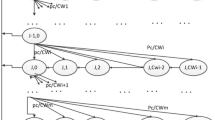Abstract
Multiple access control (MAC) protocols play a significant role in wireless LANs. The IEEE 802.11 MAC protocol specifies two coordination functions that are Distributed Coordination Function (DCF) and Point Coordination Function (PCF). While both DCF and PCF are available in a wireless cell, we propose a novel access mechanism called Adaptive Coordination Function (ACF) to support various classes of traffic. The ACF superframe comprises two periods, one TDMA period designed for real-time traffic and followed by an adaptive period which adaptively employs DCF or PCF to support non-real-time traffic. In this paper, we apply the theory of M/G/1 queues to analyze the performance of adaptive period in terms of queuing delay, end-to-end delay, and saturation throughput. With our analytic model, DCF or PCF can be invoked appropriately according to the number of stations, packet arrival rate, packet payload size, and effective channel bit rate. Analytical results are derived for an extensive throughput and delay performance evaluation of both DCF and PCF.
Similar content being viewed by others
References
Bianchi G. (1998). IEEE 802.11—Saturation throughput analysis. IEEE Communications Letters 2, 318–320
Bianchi G. (2000). Performance analysis of the IEEE 802.11 distributed coordination function. IEEE Journal on Selected. Areas in Communications 18, 535–547
Bing B. (1999). Measured performance of the IEEE 802.11 wireless LAN. In Proceedings of the of conference on local computer networks, LCN’99, pp. 34–42, Boston.
Cali F., Conti M., Gregori E. (2000). IEEE 802.11 protocol: design and performance evaluation of an adaptive backoff mechanism. IEEE Journal on Selected Areas in Communications 18(9): 1774–1786
Cali F., Conti M., Gregori E. (2000). Dynamic tuning of the IEEE 802.11 protocol to achieve a theoretical throughput limit. IEEE/ACM Transactions on Networking 8(6): 785–799
Chen H., Li Y. (2004). Performance model of IEEE 802.11 DCF with variable packet length. IEEE Communications Letters 8(3): 186–188
Chhaya, H. S., & Gupta, S. (1995). Throughput and fairness properties of asynchronous data transfer methods in the IEEE 802.11 MAC protocol. In Proceedings of the 6th IEEE international symposium on personal, indoor and mobile radio communications, Vol. 2., pp. 613–617, Toronto.
Choi, S. (2001). PCF vs. DCF: Limitations and trends. IEEE 802.11–01/54, Monterey.
IEEE Standard for Wireless LAN Medium Access Control (MAC) and Physical Layer (PHY) Specification, 1999.
Pahlavan K., Krishnamurthy P. (2002). Principles of wireless networks. Englewood cliffs, NJ, Prentice Hall PTR
Takagi H. (1991). Qusueing analysis, in vacation and priority systems. Amsterdam The Netherlands, North-Holland
Ziouva E., Antonakopoulos T. (2002). CSMA/CA performance under high traffic conditions: Throughput and delay analysis. Computer Communications 26, 313–321
Author information
Authors and Affiliations
Corresponding author
Rights and permissions
About this article
Cite this article
Cheng, ST., Wu, M. Adaptive coordination function for IEEE 802.11 wireless LANs. Wireless Pers Commun 43, 743–757 (2007). https://doi.org/10.1007/s11277-007-9279-y
Received:
Accepted:
Published:
Issue Date:
DOI: https://doi.org/10.1007/s11277-007-9279-y




